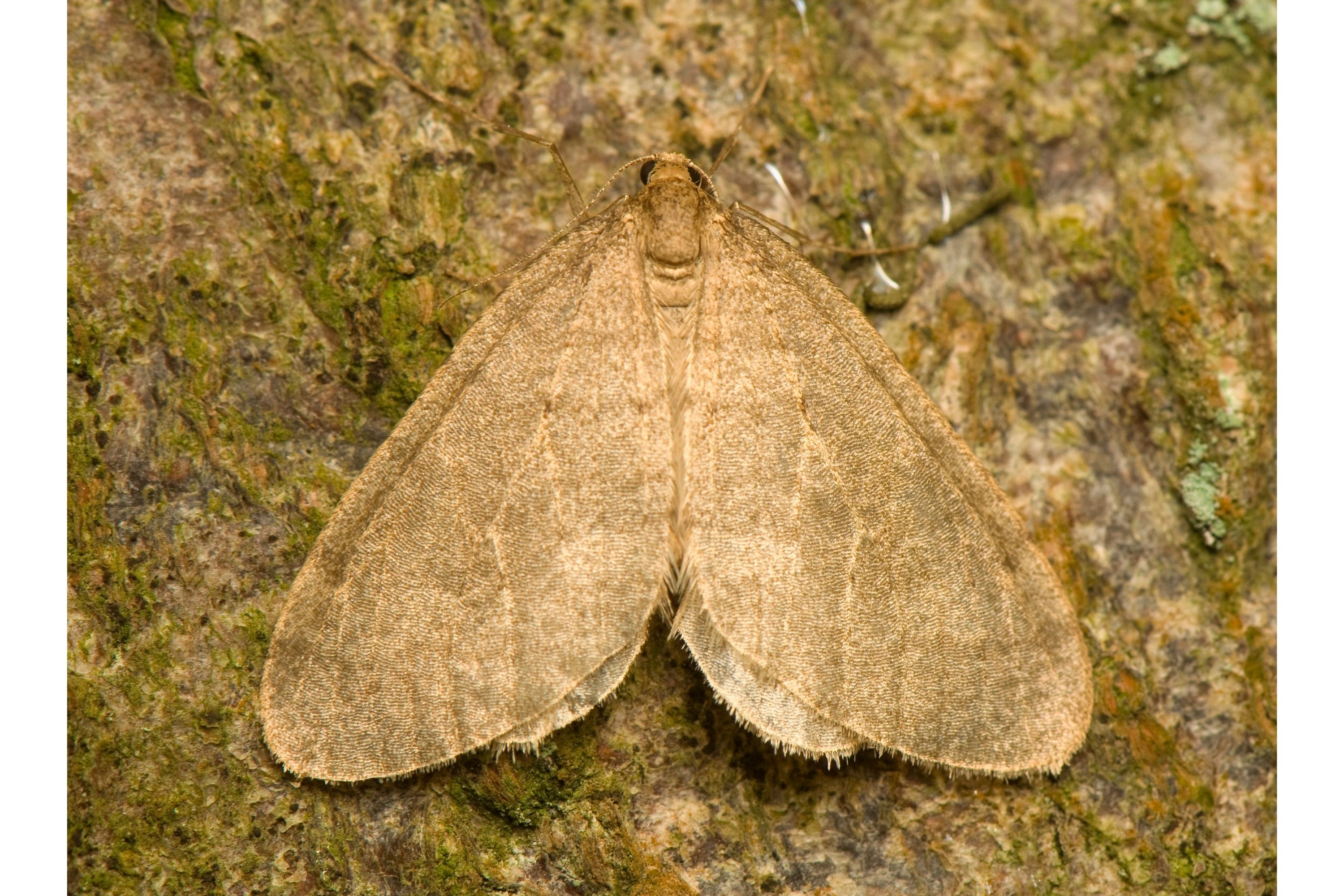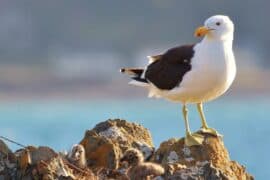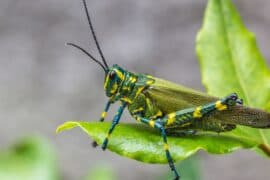Winter moth
(Operophtera brumata)

Description
The winter moth (Operophtera brumata) is a moth of the family Geometridae. It is an abundant species of Europe and the Near East and a famous study organism for evaluating insect population dynamics. It is one of very few lepidopterans of temperate regions in which adults are active in late fall and early winter. The adults use endothermy for movement in these cold temperatures. The female of this species is virtually wingless and cannot fly, but the male is fully winged and flies strongly. After the initial frosts of late fall, the females emerge from their pupa, walk to and up trees, there emitting pheromones in the evening to attract males. Fertilized, she ascends to lay, on average, around 100 eggs. Typically, the larger the female moth is the more eggs she lays. Winter moths are considered an invasive species in North America. Nova Scotia, Canada, experienced the first confirmed infestations in the 1930s. It was later accidentally introduced to Oregon in the 1950s and the Vancouver area of British Columbia around 1970. Defoliation by the moth was first noted in eastern states of the United States in the late 1990s, and is now well established in Massachusetts, Rhode Island, New Hampshire and Maine. Winter moth is confirmed present in British Columbia, Washington and Oregon. In Massachusetts, the moths have attracted the attention of several media outlets due to the severity of the infestation. Efforts at biological control are underway. The forewing ground colour of the winged males varies from grey-yellow to beige-brown or occasionally slightly reddish-tinted. The patterns are often band-shaped dark brownish, often indistinct. The fringe is yellowish. The hindwings are pale grey or yellow grey. The antennae are short and finely hairy. Because the female is wingless, many think she is wingless, but in fact female winter moths have greatly reduced wings. The flightless female has a brownish-grey body with rudimentary wing stubs that are brown to grey and have dark bands. Body length for both sexes approximately 1.0 centimeters. Larvae at hatching are 1/10 inch (2.5 mm) in length and will grow to 3/4 inch (20 mm) over a six-week period. In North America, winter moth can be confused with the related native species Bruce spanworm (Operophtera bruceata). In fact, the two species hybridize.
Taxonomic tree:







